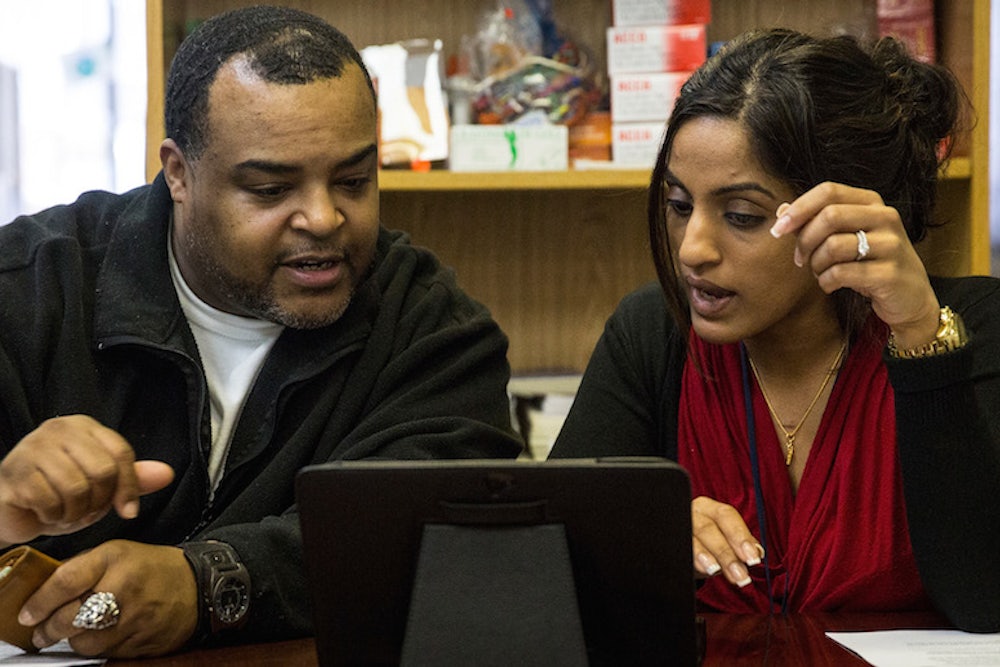Some new Obamacare information: As of the end of February, the number of Americans on Medicaid and the Children’s Health Insurance Program (CHIP) was 3 million higher than it was at the beginning of the Affordable Care Act’s open enrollment period. It’s one more sign that the health care law is reducing the number of Americans without insurance significantly—although it doesn’t tell us by how much or whether, at year’s end, the reduction will live up to original projections.
It's also one more window into our growing geopolitical divide—between the part of America where officials are trying aggressively to help poor people get health insurance, and the part where officials are not.

Medicaid, of course, is the government-run health insurance program for low-income people. It has existed since the 1960s, when lawmakers made it available to the same people receiving welfare. Over the years, some states expanded the program to include more people. Obamacare envisioned all states expanding, so that anybody with income below 133 percent of the poverty level—$15,500 for an individual, $20,900 for a family of two, and so on—could get the program. But, taking advantage of flexibility following the 2012 Supreme Court ruling on Obamacare, a large swath of mostly conservative states have opted not to expand eligibility. As a result, millions of low-income Americans living in these states remain with no viable source of comprehensive coverage.
The story is different in states that have expanded Medicaid. That explains the new figures, which the Department of Health and Human Services released on Friday morning. In states expanding Medicaid, enrollment in the two programs rose by more than 8 percent. In states that haven’t expanded Medicaid, enrollment rose by just 1.8 percent. Presumably a lot of these people were already eligible for Medicaid but either didn’t know it or hadn’t decided to do it before they heard about Obamacare. Wonks call this the “woodworking” effect.
Note that these are actual, hard statistics on enrollment. They come from states and federal databases. That makes them a lot more reliable than the survey information that organizations like Gallup and Rand have supplied lately. But the information is still very incomplete.
The data are up through the end of February, which means nobody who applied for and was accepted into Medicaid during March counts towards these numbers. It’s likely that Medicaid and CHIP enrollment swelled last month—and that it will keep rising throughout the year, because the programs, unlike private insurance under Obamacare, doesn’t have a limited open enrollment period. (One caution: I'm not entirely sure what the official 2013 baseline is. The HHS figures use September 2013 figures.)
Even so, it seems entirely possible that the final increase in Medicaid and CHIP for 2014 will turn out to be less than the 8 million the Congressional Budget Office originally projected. How much less? And would that be a big deal? Again, there’s no way to know right now.
